"Nature" sub-journal: Nano-Nano Therapeutics, exploring new opportunities and challenges for the therapeutic and diagnostic functions of nanoparticles!
However, despite the clinical implementation of more nanotechnology platforms and techniques in recent years, some important challenges unique to nanotherapeutics remain.
Recently, Paolo Decuzzi from the Italian Institute of Technology and others discussed new opportunities and old challenges in the clinical translation of nano-therapeutics on Nature Reviews Materials.
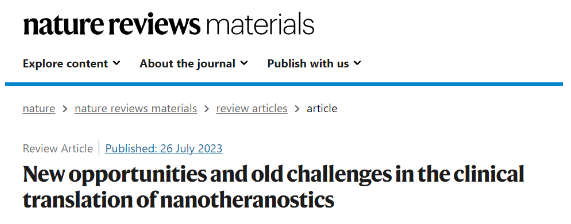
This article first discusses some of the many ways to "build" nanotherapeutics, focusing on different imaging modalities and therapeutic strategies. It then provides an overview of currently used nanotherapeutics at different stages of human clinical development, identifying specific strengths and opportunities. Finally, we define key steps along the tortuous path of preclinical and clinical development with recommendations for addressing technical, manufacturing, regulatory issues, and economic challenges of clinical translation of safe and effective nanotherapeutics.
Innovations in this article
The main innovations include:
1. Systematically summarize the application of different imaging techniques and therapeutic strategies in nanotherapeutics, including chemotherapy, radiotherapy, photodynamic therapy, etc. The article provides a detailed list of various nanotherapeutics reported in preclinical and clinical studies.
2. Three main strategies for designing and preparing nanotherapeutics are proposed: innate, modified and encapsulated. Each strategy has different advantages, and different methods can be selected according to the needs to integrate imaging and therapeutic functions.
3. Focus on summarizing the nanotherapeutic agents that have entered into clinical trials and applications, such as iron oxide nanoparticles, gold nanoshells, fluorescent nanoprobes, etc., and analyze the technical characteristics and advantages of these nanotherapeutic agents.
4. The challenges of translating nanotherapeutics from the laboratory to the clinic are discussed in depth, including technical difficulties, manufacturing issues, regulatory considerations, and interdisciplinary knowledge integration, etc., and some suggestions for addressing these challenges are put forward.
5. The future development direction of nanotherapeutics is prospected, such as rational optimization of existing materials, transformation of approved nanomedicines into nanotherapeutics, and establishment of good dialogue with regulatory agencies.
graphic reference
Nanotherapeutic drugs are systems that combine therapeutic agents and imaging agents in nanocarriers, which can recognize diseased tissues by targeting molecular or material properties, and can also be activated by endogenous or exogenous stimuli. Advantages of nanotherapeutics include the ability to stratify patients, order activation, and enhance therapeutic efficacy.
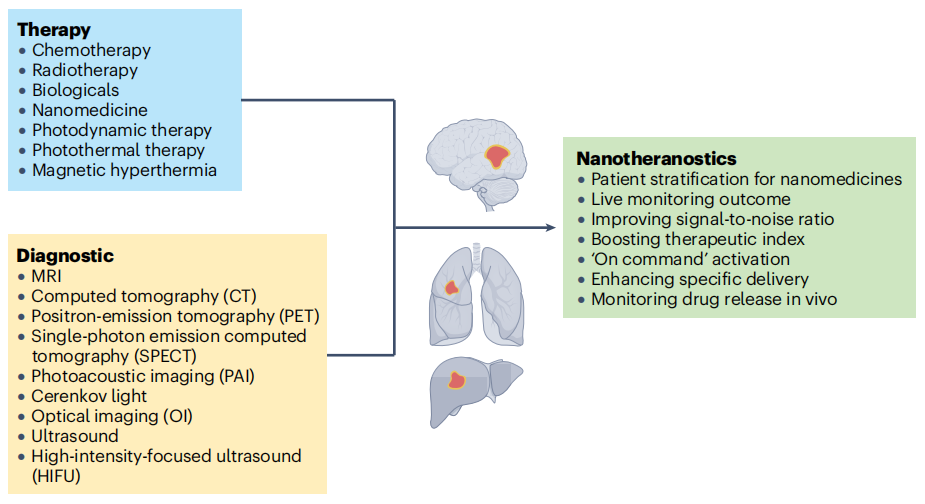
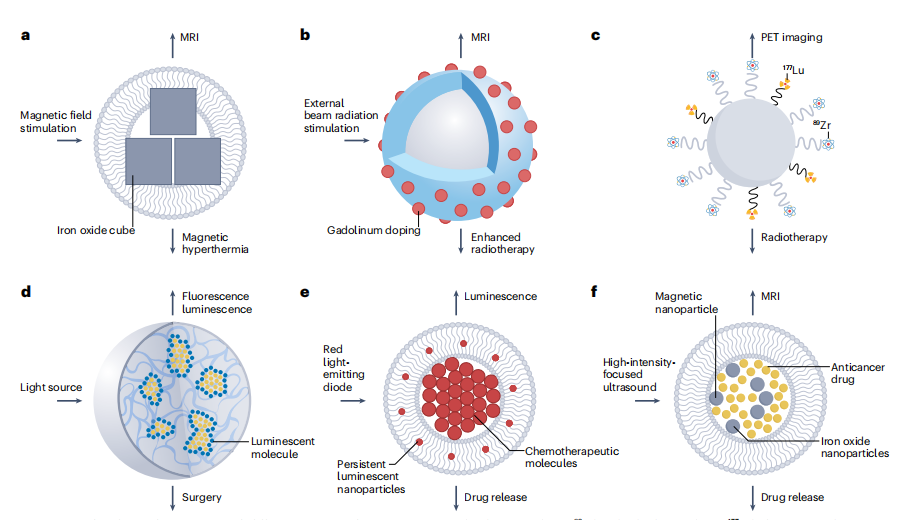
Figure 2 | Examples of nanotherapeutics with different imaging, therapeutic and targeting components
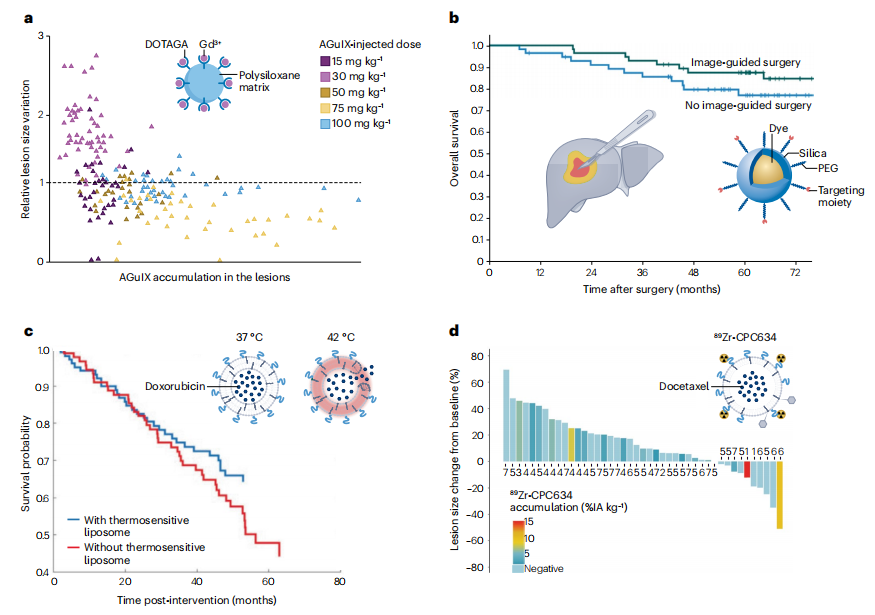
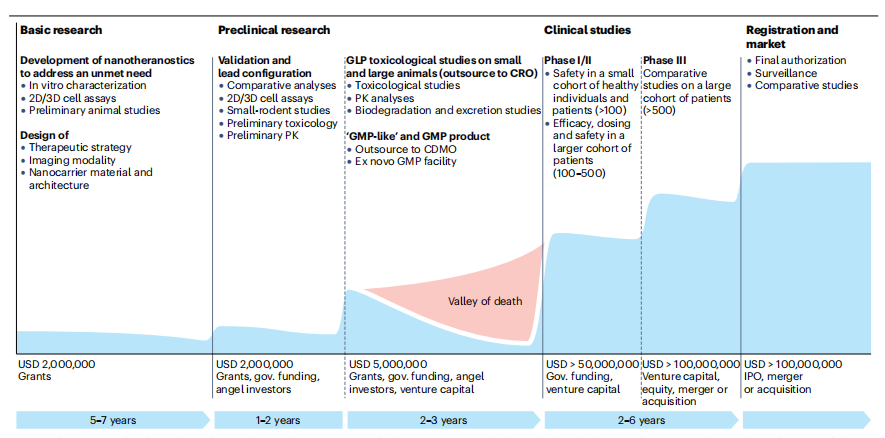
Figure 4 | Milestones in clinical translation of nanotherapeutics
Strengths and Challenges
Nano-therapeutic drugs are nano-carriers with therapeutic and diagnostic functions, which have the following advantages:
1. Patients can be stratified and patients suitable for nano-diagnosis and treatment can be selected
2. Can monitor and predict the effect of drug administration
3. It can improve the efficiency of imaging and treatment
4. Can be activated by endogenous or exogenous stimuli
5. Can report drug release
challenges
1. In terms of technology, it is necessary to optimize the matching of treatment and imaging performance of existing materials, and use mature lipid and polymer nanomaterials.
2. In terms of manufacturing, existing nano-medicines can be converted into nano-medicines for diagnosis and treatment, and combined with artificial intelligence, it helps to extract biological information of diseases. COVID-19 has also spurred the growth of contract research and production organizations.
3. In terms of regulation, early contact with regulatory agencies can help them understand new materials and technologies, and formulate correct approval pathways. Biotechnology accelerators also provide new communication opportunities.
4. On the whole, scientific rationality and medical relevance are necessary conditions, but the realization of transformation requires the establishment of symbiotic interaction between academia and other stakeholders.
Summarize
Overall, the abundance of preclinical nanotherapeutics demonstrates great potential for combining imaging, therapy, and targeting in one nanostructure. It has certain guiding significance for the development of this field. Its innovation lies in the comprehensive and systematic summary of this emerging interdisciplinary subject, which provides a valuable reference for subsequent research and transformation applications.
18915694570
Previous: The black technology s
Next: 《Nature》Biomimetic pro


